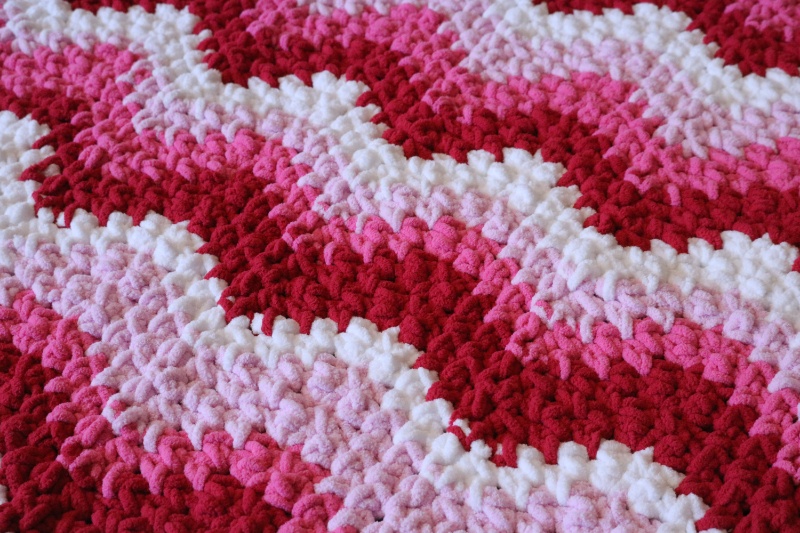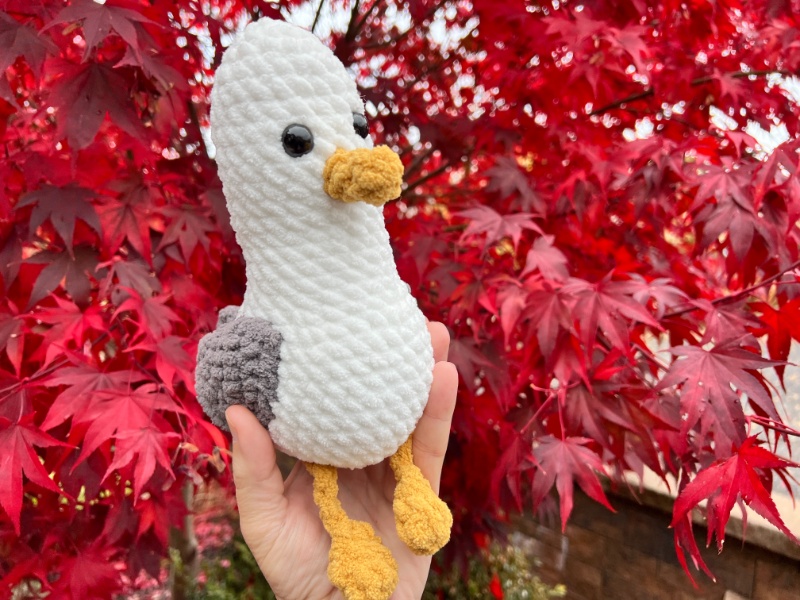
Are you eyeing up that chenille yarn? You know the super fluffy yarn on the shelf. You have to consider what chenille is.
Chenille is a French word for caterpillar, and it is created by trapping short lengths of yarn in a core of thread or yarn. When you squeeze this yarn, you can feel the core inside the pile of yarn.
Chenille can be made with a mix of fibers, giving it the final look, but not all fibers behave the way we hope they will. When deciding on this type of yarn, you are looking for some aspects that are not equal.
Tips for Choosing the Right Chenille Yarn
Does the pile easily come out of the core? If you pinch a portion of the yarn and pull, how trapped is the yarn within the core? If it easily comes out, you know the fibers will shed after the project is completed through general wear and tear. Every manufacturer has their own way of trapping the yarn in the core. If you have tried chenille from one brand, it’s not the same across the board.
Do the fibers crush when you push on them? When you examine the yarn, how plush is it? If the yarn is not bouncing back, you know in advance the pile of yarn will not bounce back without having to shake the project to get its original look back. There is such a thing as too soft; you can expect your project to look flattened quickly.
How slippery is the yarn? When you roll it between your fingers or use it on a hook, how slick is it? The slippery nature of chenille turns people off from using chenille, as they don’t realize that not all chenille is the same. If the yarn is too slick, the stitches cannot hold their consistency and tend to work out of position, causing the look of snags to appear on the project. If the project catches on something, expect strands to pull out, and during washing, it happens for virtually the entire project; it’s pretty distressing. It’s the only time it doesn’t happen if you use a single crochet or a tight stitch. Forget using half double crochet and double crochet if the yarn is slippery.
Slippery and shiny velvety yarn tends to get a lot of attention on the shelf until you get it home. Face it, it was pretty on the shelf and tempted you. Your finished item and goals matter the most with this type of yarn.
How long are the strands coming out of the core? Examine the yarn thickness against another brand and make a determination. The further it extends out of the core, the more chances that the yarn will crush. Short piles from the core are very hard to condense down, which is better.
Chenille Yarn Recommendations, Uses, and Other Considerations
For chenille, my go-to is the Bernat Blanket extensions of yarn. The yarn is not slippery, and the stitches grab onto each other instead of working their way out of formation. The balls are excellent, but there is no give when you try to crush them. It means simply that when crocheting with it, the project will maintain its look and the solid nature of the yarn itself.
Whether it’s fun home decor, blankets, amigurumi, or much more, it’s a fun type of yarn to play with. Thicker yarn in the super bulky weight makes for cute animals, whereas the stuffing inside a character is locked inside with no way to escape. This is an excellent idea for creating something special intended to last.
Being objective, though, finding the interior strand is a challenge. There is a patent preventing large manufacturers from using tags on the end of the interior strand to make it easier to find. You know, humans make it challenging to share good ideas. I get frustrated myself, but once I get it and deal with the yarn barf, I’m good to go. It crochets fast enough that the trauma of the yarn barf is easily in my past, and I forget about it until the next ball. It’s worth it, though.
In the yarn world, behind the scenes, we call making the stuffies Blanketgurumi when using Bernat Blanket in this way. I cannot deny that they are super cute, and I love them! It’s a fast way to make the stuffies, too!

(Seagull is from a local craft fair. I bought it from a local crocheter who loves creating Blanketgurumi.)
If you have further experiences with chenille, leave me a comment below. I would love to hear your thoughts.

 Michael Sellick, known as “Mikey” by crocheters, pioneered crochet instruction on YouTube, transforming a simple idea into the thriving community, The Crochet Crowd. Driven by the uplifting moments he witnessed, Mikey has fostered a global community since 2008, designing over 300 patterns, including his popular “Study of” series—stitch samplers reflecting current themes. Read more about Mikey here.
Michael Sellick, known as “Mikey” by crocheters, pioneered crochet instruction on YouTube, transforming a simple idea into the thriving community, The Crochet Crowd. Driven by the uplifting moments he witnessed, Mikey has fostered a global community since 2008, designing over 300 patterns, including his popular “Study of” series—stitch samplers reflecting current themes. Read more about Mikey here.


